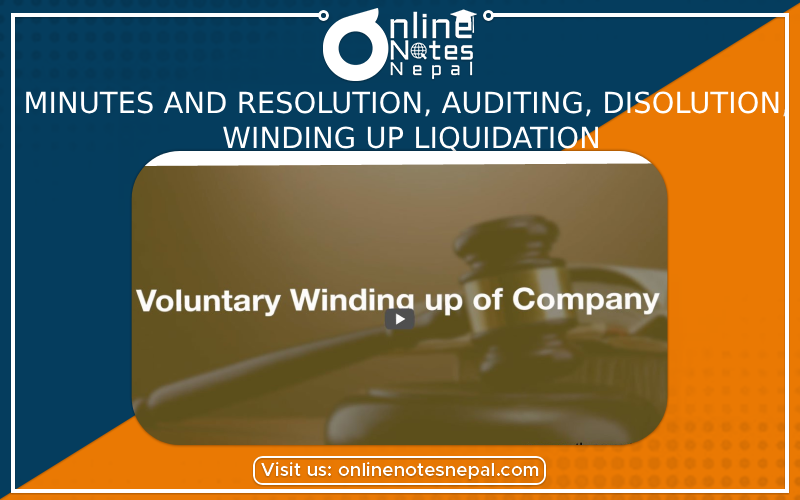Published by: Anu Poudeli
Published date: 07 Aug 2023

Resolution and Minutes:
Minutes and resolutions are critical components of the corporate world and organizational decision-making processes. They are official documents intended to capture and preserve decisions, conversations, and actions taken during meetings of a company's shareholders, board of directors, or other governing bodies. These records are essential for guaranteeing openness, accountability, and legal compliance.
Minutes:
Minutes are detailed written records of a meeting's proceedings. They usually include the meeting's date, time, and place, a list of attendance, a description of the issues covered, and the choices made. The minutes are an official record of what happened during the meeting and can be used for proof and verification later on.
Resolution :
A resolution is a formal decision or order made by a governing body at a meeting. Resolutions can be used for a variety of purposes, including approving financial transactions, appointing officers, sanctioning contracts, and making major policy choices. Resolutions are typically documented in writing and signed by the persons involved to demonstrate their agreement and acceptance.
Auditing:
Auditing is the systematic examination and verification of a company's financial records, transactions, and statements to guarantee correctness, compliance, and dependability. Auditing's primary goal is to give an impartial and objective examination of a company's financial status, performance, and internal controls.
Audit types include:
Dissolution:
The formal process of terminating the legal existence of a commercial company or organization is referred to as dissolution. Under some conditions, dissolution might occur freely or involuntarily.
Voluntary Dissolution: This occurs when a company's owners or shareholders elect to close the doors and liquidate its assets. The voluntary dissolution procedure often entails the company's shareholders passing a resolution, completing the necessary documentation with the appropriate government agencies, settling the company's liabilities, and distributing leftover assets among the shareholders.
Involuntary Dissolution: When a corporation is ordered to close down by the government or a court owing to noncompliance with regulatory standards, failure to produce required documentation, or other legal grounds, this is known as involuntary dissolution.
Closing Liquidation:
The process of disposing off a company's assets, collecting its debts and liabilities, and distributing the leftover monies or assets to the company's stakeholders after the firm has been dissolved is known as winding up liquidation. This occurs during the liquidation phase of a company's demise.
Winding up can be classified into two types:
Compulsory Winding Up: When a court mandates the winding up of a firm owing to insolvency or other legal reasons, this is known as compulsory winding up.
Voluntary Winding Up: When a company's shareholders decide that it is no longer viable or lucrative, they undertake a voluntary winding up.
A liquidator is hired to monitor the process, realize the company's assets, pay off its debts, and distribute any remaining monies or assets to the owners based on their individual interests.